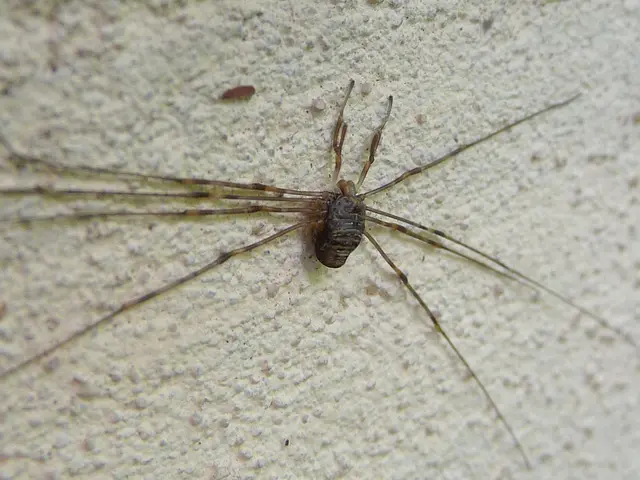Rapid and severe rosacea flare-up: Understanding causes, signs, and remedies
Rosacea Fulminans: A Rare and Severe Skin Condition
Rosacea Fulminans, a severe, sudden-onset inflammatory skin disorder, predominantly impacts the central facial area, including the chin, cheeks, and nose. Similarly known as pyoderma faciale, this condition presents as red, swollen, and painful nodules and pimples that tend to merge, differing from common rosacea or acne manifestations due to their increased severity and rapid onset.
Primarily affecting females of childbearing age, the exact cause of Rosacea Fulminans remains elusive. Some research suggest links between the disorder and conditions such as inflammatory bowel disease and pregnancy, as well as a higher likelihood in individuals who have experienced milder forms of rosacea previously.
Potential triggers for Rosacea Fulminans may include emotional stress, hormonal fluctuations, and certain medications. A 2021 literature review proposes that dietary factors may also induce or exacerbate symptoms, though more research is required to ascertain the specific dietary triggers for this condition.
Common dietary triggers for rosacea more broadly, and potentially for Rosacea Fulminans, may include spicy foods, alcohol, foods containing cinnamaldehyde, such as chocolate, tomatoes, and citrus fruits, histamine-rich foods and beverages like wine, aged cheese, and processed meats, as well as hot drinks. Individual triggers can vary significantly between affected individuals, and healthcare professionals do not recommend specific dietary recommendations for all rosacea patients due to these variations.
Symptoms of Rosacea Fulminans primarily affect the forehead, nose, cheeks, and chin, including sudden onset of severe, localized skin color changes such as redness, painful pustules, papules, and nodules, swelling and inflammation, flushing and blushing, as well as stinging and burning sensations. In some cases, individuals may experience ocular symptoms such as dry, burning, or itching eyes and light sensitivity, while systemic symptoms like fever and fatigue are rare.
Treatment for Rosacea Fulminans may involve oral isotretinoin, a prescription-only acne medication, as well as corticosteroids, administered orally or topically. In a 2016 case study, antibiotics combined with corticosteroids and lifestyle changes helped alleviate a patient's symptoms. Healthcare professionals may also recommend stress reduction techniques, dietary modifications, and gentle skin care products to manage symptoms and improve quality of life.
Anyone experiencing symptoms beyond typical rosacea or acne, such as large tender nodules, abscesses, significant facial discomfort, sudden onset of symptoms, persistent or worsening symptoms despite self-treatment, eye irritation or inflammation, or systemic symptoms including fever, should consult a dermatologist or another healthcare professional promptly. Proactive intervention can help manage symptoms, reduce the risk of complications like scarring and infections, and address emotional distress that can impact quality of life.
While the connection between specific foods and Rosacea Fulminans remains unclear, some dietary factors are recognized as potential triggers for rosacea more broadly. If an individual suspects their dietary choices may exacerbate their condition, consultation with a dermatologist for personalized guidance is advised.
- Rosacea Fulminans, a severe and sudden-onset skin condition, is predominantly observed in females of childbearing age, and research links it to conditions like inflammatory bowel disease and pregnancy.
- Treatment for Rosacea Fulminans may include oral isotretinoin, corticosteroids, and lifestyle changes such as dietary modifications and stress reduction techniques.
- The exact cause of Rosacea Fulminans is elusive, but potential triggers include emotional stress, hormonal fluctuations, certain medications, and dietary factors like spicy foods, alcohol, foods containing cinnamaldehyde, histamine-rich foods and beverages, and hot drinks.
- Anyone experiencing symptoms beyond typical rosacea or acne, such as large tender nodules, significant facial discomfort, eye irritation or inflammation, systemic symptoms including fever, or persistent symptoms despite self-treatment, should consult a dermatologist or healthcare professional promptly.








